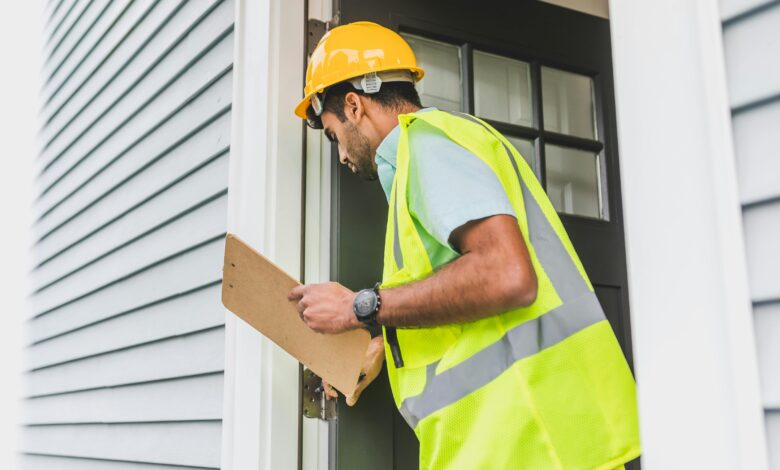The Best Tips for Buying a Fixer-Upper: A Comprehensive Guide

Buying a fixer-upper can be an excellent way to get into homeownership or invest in real estate at a lower cost. However, while the potential savings and personalization opportunities are appealing, purchasing a property that needs significant repairs comes with its own set of challenges. To ensure you make a smart investment and avoid costly surprises, it’s essential to approach buying a fixer-upper with careful planning and due diligence. In this article, we’ll share the best tips for successfully navigating the process.
Why Buy a Fixer-Upper?
Before diving into the tips, let’s briefly explore why people choose fixer-uppers:
- Lower Purchase Price : Fixer-uppers are often priced below market value due to their condition.
- Customization Opportunities : You can renovate the home to suit your preferences and needs.
- Potential for Equity Growth : Proper renovations can significantly increase the property’s value.
- Learning Experience : For DIY enthusiasts, fixer-uppers provide hands-on experience with home improvement projects.
However, these benefits come with risks, including unexpected repair costs and time-consuming renovations. That’s why preparation is key.
1. Set a Realistic Budget
One of the biggest mistakes buyers make is underestimating renovation costs. A fixer-upper may seem like a bargain upfront, but hidden issues can quickly add up.
Tips for Budgeting:
- Factor in Renovation Costs : Research average costs for common repairs (e.g., roof replacement, plumbing upgrades) and include a contingency fund (typically 10–20% of the total budget).
- Include Financing Fees : If you’re taking out a loan, account for interest rates and closing costs.
- Plan for Permits and Inspections : Many renovations require permits, which come with fees.
- Avoid Over-Customizing : Focus on functional improvements rather than luxury upgrades unless they add clear value.
2. Get a Professional Inspection
A thorough inspection is critical when buying a fixer-upper. It helps uncover hidden problems that could lead to major expenses down the road.
What to Look For:
- Structural Issues : Cracks in the foundation, sagging floors, or water damage.
- Roof Condition : Leaks or aging materials can be expensive to repair.
- Plumbing and Electrical Systems : Outdated or faulty systems may require complete overhauls.
- Pest Infestations : Termites, rodents, or other pests can cause extensive damage.
- HVAC Systems : Check if heating and cooling systems are functioning efficiently.
Hire a qualified inspector who specializes in older homes or distressed properties. Their report will guide your decision-making and help you negotiate the purchase price.
3. Know Your Limits
Be honest about your skills, resources, and willingness to take on a project. Not all fixer-uppers are created equal—some require minor cosmetic updates, while others demand extensive structural work.
Assess Your Capabilities:
- DIY vs. Hiring Professionals : Decide which tasks you can handle yourself and which require expert help.
- Time Commitment : Renovations can take months or even years. Are you prepared for the long haul?
- Emotional Toll : Living in a construction zone can be stressful. Consider temporary housing options if needed.
If you’re inexperienced with home repairs, lean on professionals for complex jobs like electrical wiring or plumbing.
4. Choose the Right Location
The location of a fixer-upper is just as important—if not more so—than the property itself. A great location can offset the costs of renovations and boost resale value.
Key Factors to Consider:
- Neighborhood Trends : Is the area up-and-coming? Are property values increasing?
- School Districts : Homes near good schools tend to appreciate faster.
- Proximity to Amenities : Access to public transportation, shopping, parks, and healthcare facilities adds convenience and appeal.
- Future Development Plans : Check local zoning laws and development plans that might impact property values.
Remember, no amount of remodeling can compensate for a bad location.
5. Prioritize Essential Repairs First
When renovating a fixer-upper, focus on repairs that improve safety, functionality, and curb appeal before tackling aesthetic upgrades.
Common Priorities:
- Foundation and Structural Integrity : Address any cracks, leaks, or settling issues.
- Roof and Gutters : Ensure proper drainage and protection from weather damage.
- Plumbing and Electrical Systems : Upgrade outdated or unsafe components.
- Insulation and Windows : Improve energy efficiency to reduce utility bills.
- Curb Appeal : Fresh paint, landscaping, and a new front door can make a strong first impression.
Cosmetic changes like painting walls or updating fixtures can wait until the essentials are complete.
6. Secure the Right Financing
Financing a fixer-upper differs from buying a move-in-ready home. Specialized loans can cover both the purchase price and renovation costs.
Popular Loan Options:
- FHA 203(k) Loan : Allows borrowers to finance both the home purchase and repairs through a single mortgage. Ideal for moderate renovations.
- VA Renovation Loan : Available to eligible veterans and active military members for purchasing and rehabilitating homes.
- HomeStyle Loan : Offered by Fannie Mae for financing major renovations alongside the home purchase.
- Personal Loans or Credit Cards : Suitable for smaller-scale projects but come with higher interest rates.
Work with a lender experienced in fixer-upper financing to explore your options.
7. Negotiate the Purchase Price
Given the work required, sellers of fixer-uppers are often willing to negotiate. Use the inspection report and repair estimates to justify a lower offer.
Negotiation Strategies:
- Highlight Major Issues : Point out costly repairs uncovered during the inspection.
- Compare Comparable Sales : Show evidence of similar homes selling for less in the area.
- Request Seller Concessions : Ask the seller to contribute toward closing costs or specific repairs.
Keep negotiations respectful and grounded in facts to reach a mutually beneficial agreement.
8. Create a Detailed Renovation Plan
A well-thought-out plan ensures renovations stay on track and within budget. Break down the project into phases and prioritize tasks logically.
Steps to Create a Plan:
- List All Repairs and Upgrades : Categorize them as “must-haves” and “nice-to-haves.”
- Estimate Costs : Get quotes from contractors for each task.
- Set a Timeline : Determine how long each phase will take and schedule accordingly.
- Assemble a Team : Hire reliable contractors, architects, or designers as needed.
- Track Progress : Regularly review expenditures and timelines to avoid overspending or delays.
Having a clear roadmap minimizes stress and keeps the project organized.
9. Understand Resale Value
While personal satisfaction is important, consider how renovations will affect the home’s resale value if you plan to sell in the future.
Tips for Maximizing ROI:
- Focus on High-Impact Areas : Kitchens, bathrooms, and curb appeal yield the highest returns.
- Stick to Neutral Designs : Avoid overly trendy finishes that might not appeal to future buyers.
- Add Functional Features : Extra storage, energy-efficient appliances, and smart home technology are attractive selling points.
- Don’t Over-Improve : Keep upgrades consistent with neighborhood standards to avoid pricing yourself out of the market.
Balancing aesthetics with practicality ensures your investment pays off.
10. Stay Flexible and Patient
Renovating a fixer-upper rarely goes exactly as planned. Delays, unexpected issues, and budget overruns are common. Staying flexible and patient will help you navigate challenges without losing sight of your goals.
Ways to Stay Positive:
- Celebrate Small Wins : Acknowledge progress, no matter how minor.
- Seek Support : Join online forums or local groups for advice and encouragement.
- Maintain Perspective : Remember why you chose the fixer-upper route and envision the finished product.
Patience and perseverance are key to transforming a diamond in the rough into your dream home.


